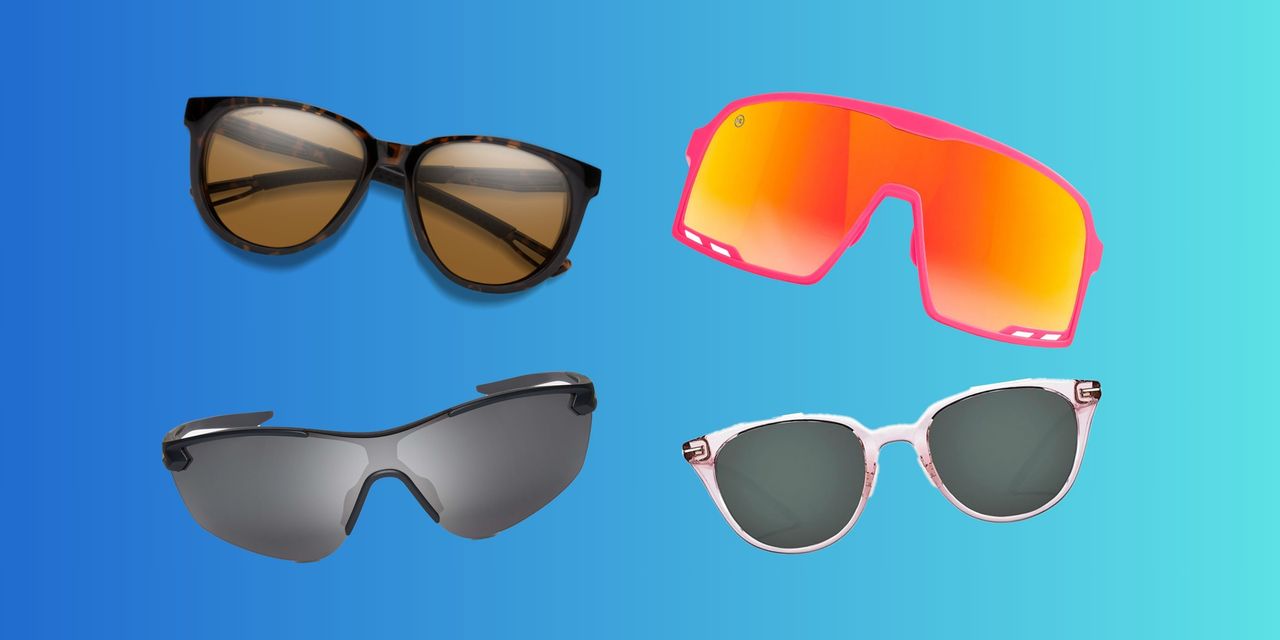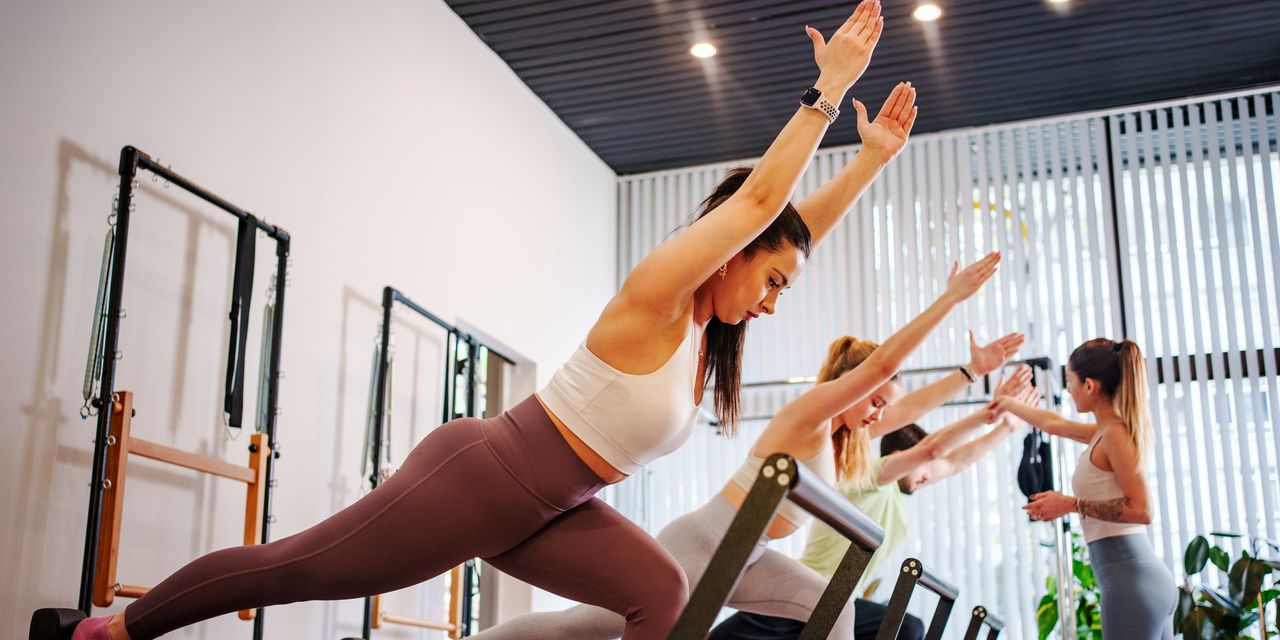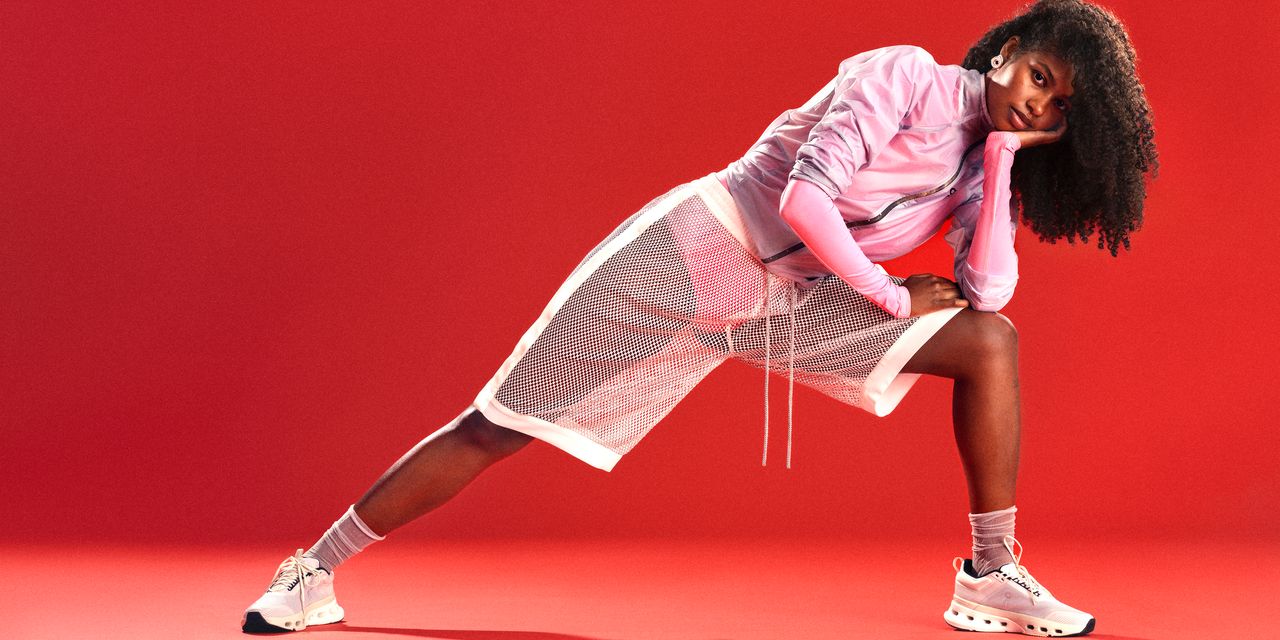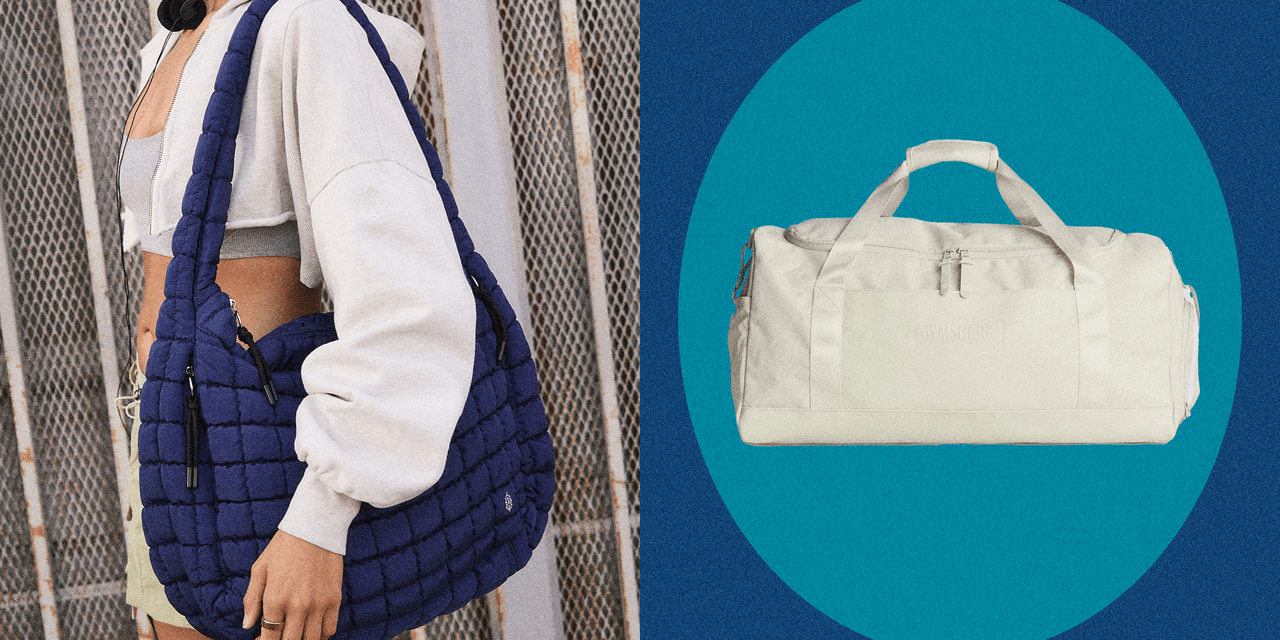The Best Running Sunglasses That Stay Put and Look Cute Doing It

About eight miles into a recent ten-mile race, I was tired, dehydrated, and starting to feel some serious brain fog set in. What made me feel even foggier? My sunglasses—an old pair I should not have been running in—completely clouded up, making it hard to see and impossible to concentrate. I took them off, threw them into the grass, and squinted for the rest of the race.
It’s a lesson all runners must learn: The best running sunglasses need to do a whole lot more than protect your eyes. And the pairs that work when you’re driving, laying on the beach, or going for a walk may not fly when you’re running on the track or trails. “I want my sunglasses to feel lightweight, give good coverage of my face, and not move or slip off,” certified running coach Kim Underwood tells SELF. “I want to focus on my running and forget that they’re there, so I want to not feel them or have to touch them at all.”
But they’re not just for looks (or even for cutting down on glare). “Wearing sunglasses is important for long-term eye health,” Andrea Blitzer, MD, an ophthalmologist at NYU Langone Eye Center and an avid runner, tells SELF. “It’s similar to wearing sunscreen for the skin—it provides UV protection, which protects the eye as well as the skin around the eye against problems like cataracts, macular degeneration, and some cancers.”
I took the experts’ advice and got my hands on some high-quality running sunglasses to test. Here are the best options I found, plus tips on how to find the pair that’ll work for you.
Our top picks
- Best Overall: Smith Seeker, $215
- Best Clarity: Oakley Corridor Sq, $231
- Best Budget Pick: Goodr Bolt G, $35
- Best Budget RX: Tifosi Selca, $35
- Best for Marathons: Nike Victory Elite, $159
- Most Durable: Knockaround Campeones, $55
- Best Anti-Fog: Rudy Project Astral Sphere, $230
- Best for Small Faces: 100 Percent Hypercraft XS, $138
- Best Cat Eye: Roka Lola, $220
“I always wear sunglasses when I run, even when it’s not super bright,” says Underwood. “It helps me keep my face relaxed, which is so important for keeping my body relaxed too. It also signals to my brain that it’s go time.” Shop Underwood’s favorites, plus more pairs we love, below.
Best Overall: Smith Seeker
In my testing, I found myself wanting to grab the Seeker over and over again—partially because of the forget-they’re-there comfort, and partially because I fell in love with Smith’s signature Chromapop lenses, which make colors look brighter and details more vivid. As much as I love sleek racing sunnies, I’ll always opt for a more casual pair that I can also wear to the brewery post-run. These shades fit the bill.
You can choose between polarized, low light, or photochromic lenses, and adjust the temples for a customized fit. While the Seeker doesn’t have the wraparound coverage that some other options on this list do, they do have subtle side shields that add some protection from light and glare.
Material: Nylon, polycarbonate | Polarized: Most colors | RX option: Yes
Best Clarity: Oakley Corridor Square Sunglasses
Oakley
Corridor Square Sunglasses
Used to sunglasses that make everything around you look dark and gloomy? Putting on a pair of Oakleys with the brand’s Prizm technology is like stepping from Kansas into Oz. “Oakley is a tried-and-true brand that’s been around for a long time,” Ryan King, accessories product manager at Road Runner Sports, tells SELF. “They’re going to have the best technology on the market.”
The lenses on the Corridor Square (plus lots of other Oakley pairs) manipulate light to help you see the colors and details that you might miss with other types of lenses. This is key for enjoying your surroundings and seeing what’s ahead of you on the roads or trails.
Of Oakley’s performance models, the Corridor Square is a standout for its sporty-but-not-too-sporty look and lightweight, comfortable feel. It also has some serious grip on both the nosepiece and the earsocks to keep it in place, even when you’re covered in sweat.
Material: Nylon, polycarbonate | Polarized: No | RX option: No
Best Budget Pick: Goodr Bolt G
Goodr sunglasses have a massive runner fan base for a good reason: They’re budget-friendly, they come in lots of fun colors and styles, and the quality is great (especially for the price!). While the brand’s OG model is by far their most popular (Dr. Blitzer is “obsessed” with her pair), it’s their Bolt G that offers the most runner-friendly features, says King. Think: vents in the lenses that promote airflow and prevent fogging, plus an adjustable nose piece for a custom fit.
With the Bolt Gs, you also have the option of mirrored lenses (which help reduce glare), or gradient lenses (which are darker at the top, to block overhead rays and increase ground visibility).
Material: Copolyester, TAC (tri acetate cellulose) | Polarized: Yes | RX option: No
Best Budget RX: Tifosi Selca
While you can add a prescription lens to several frames on this list, it typically comes at a pretty steep price. Not so with Tifosi’s aviator-style Selcas. They’re also fully customizable, so you can choose the color of your frames and lenses, as well as whether you’d like polarization.
When I took the Selcas out on a long run, they were comfortable and bounce-free. Tifosi shades are also designed to not pull on your hair when you slide them on and off, which is a bonus. My only complaint is that they did fog up a bit on a hot, humid day.
Material: Plant-based material, polycarbonate, rubber | Polarized: Some colors | RX option: Yes
Best for Marathons: Nike Victory Elite
When Underwood is ready to lock in and race a fast marathon, she reaches for her Nike Victory Elite sunglasses. “They are super lightweight and they just stay put,” she says. “I also love the look. Putting them on feels like I’m ready to go.”
Designed specifically for women (based on insights from Nike’s top elite runners), the Nike Victory Elites have an adjustable nosepiece and temple arms for the right fit. A one-piece wraparound lens also provides plenty of protection and coverage.
Material: Nylon, polycarbonate, rubber | Polarized: No | RX option: Via clip-in
Most Durable: Knockaround Campeones
Knockaround sunglasses are meant for just that—being knocked around. The Campeones, the brand’s full-coverage shield option, are no different, which I confirmed during testing. After a few drops (both intentional and accidental), they survived without a scratch.
Purposefully non-polarized, the Campeones are made for athletes who benefit from depth perception, like trail runners and mountain bikers, since a little bit of glare can help you tell distance, slope, and depth. (The lens’ mirrored coating helps reduce the worst of the glare.) Plus, I put my sweaty fingers all over the lenses to test their water- and oil-resistant coatings, and was surprised by just how minimal a smudge I managed to make.
Material: Polycarbonate | Polarized: No | RX option: No
Best Anti-Fog: Rudy Project Astral Sphere
Rudy Project
Astral Sphere
The lenses for most running sunglasses are cut out of a cylindrical piece of glass or plastic. But your eyes aren’t shaped like cylinders—they’re spheres. That’s the idea behind Rudy Project’s Astral Sphere sunglasses, which instead are cut from a spherical piece of polyurethane. This material is also a higher-quality, more durable plastic than the polycarbonate that most other lenses are made from.
There are lots of benefits to the Astral Sphere’s more anatomical shape—the extra room between your eye and the lens can reduce the risk of fogging, as well as increase clarity and comfort. What’s not to love?
Material: Bio-plastic material, polyurethane | Polarized: Some colors | RX option: Yes
Best for Small Faces: 100 Percent Hypercraft XS
Try on enough performance sunglasses, and it’s not hard to come to the annoying conclusion that most of them are made for men, who on average have larger faces than women. Many pairs that are supposedly one-size-fits-all are too big for some runners. That’s why 100 Percent made the XS version of their popular Hypercraft model, with all the features runners love in a slightly smaller package.
The Hypercraft XS have full wraparound coverage, and they’re super lightweight—at 23 grams, they feel surprisingly sturdy. The lenses are scratch-resistant and treated to repel water, dirt, and oil. And if one lens isn’t enough, you can swap it out for another (the case is even designed to carry multiple lenses).
Material: Nylon, carbon fiber, polycarbonate | Polarized: No | RX option: No
Best Cat Eye: Roka Lola
I’ll admit it: Sometimes, I choose aesthetics over performance with sunglasses, and it was the Roka Lola’s stylish cat eye frames that first drew me to them. But there’s more to these shades than meets the eye (ha), and the Lola packs as big a performance punch as nearly any other option on this list.
For one, they’re our lightest pick, at a practically unheard of 19 grams. And during my run, they performed perfectly, with no fogging, bouncing, or slipping (the latter thanks to Roka’s proprietary Geko technology—there are slightly sticky pads at your temples and nose that get even stickier when they get wet). If none of the Lola’s eight color and tint combos suit your fancy, you can build your own pair, with four frames and 12 lenses to choose from (plus, you can add a prescription). And if the fit around the nose isn’t ideal, try one of the other nosepieces included with your purchase—one is bound to feel just right.
Material: Nylon, polycarbonate | Polarized: Yes (unless you choose a non-polarized lens in customization) | RX option: Yes
What to consider when shopping for running sunglasses
The most important factor to look for in any pair of sunglasses is UV protection, says Dr. Blitzer. Opt for sunglasses that have a 400 UV rating, which indicates that they protect against 100% of UV rays. Heads up: Dark lenses aren’t necessarily better—the color and darkness of the lens isn’t related to the amount of UV protection it offers. Instead, pick your tint based on the light conditions and setting you’ll typically be running in (some tints work better for lower light, for instance, or for trails) and your preferences.
Polarized lenses, which filter out the glare you might experience coming from the road, cars, or water, are key for when you’ll be running in bright, direct sunlight. But polarization isn’t a must, depending on where you’ll be running. And, in some cases—like if you often run on trails or in low light—you may want to avoid it, as it can mess with your depth perception and make screens difficult to read.
There are also photochromic lenses, which are similar to transition lenses in that they adjust to changing light conditions. These are a great option for runners who’ll be in and out of the sun (like on a trail run through the woods), or for those who want to combine them with prescription lenses, so that they can leave their frames on (even when there’s no sun).
Sunglasses that are too small can cause headaches. Pairs that are too large may bounce or slide around and can fog up more easily. Most brands will label their sunglasses as best for small, medium, or large heads—some even come with adjustable nosepieces or temples to help you find the perfect fit.
That said, nothing beats trying on a pair before you buy it. Dr. Blitzer recommends moving your head up and down to test if they’re actually going to stay on and be comfortable while you’re on the move. (If you typically run with a hat or headphones, bring those with you to make sure the fit is compatible.) Also key for comfort: Grips around the nose to prevent slipping, even when you’re sweaty.
Running sunglasses weigh less than your typical sunglasses—most will be under 30 grams and made with light, durable materials (like polycarbonate), rather than the glass you’d find in a more fashion-forward pair. Avoid sunglasses with thick rims, which will decrease your peripheral vision.
The shape of the frames comes down to personal preference—you might want a sportier, shield-style pair, or more of a classic frame that can work outside of your run too. But also, keep in mind that wraparound shield-style frames can give you more protection from the sun—as well as anything else that may try to get in your eyes, like dust, pollen, or debris.
Running sunglasses can come with dozens of other features—like interchangeable lenses, which allow you to make a swap if you need a different tint, or want to use the same frame for your prescription lenses.
Lenses can come with different coatings, like anti-scratch, anti-fog, anti-smudge, or a mirrored coating, which can help reduce glare. Some performance shades also have ventilation features, to keep air moving and your lenses fog-free.
How we found and tested these sunglasses
To find the best running sunglasses, I asked an eye doctor (who is also an avid runner) and a running coach for their favorite pairs, then went searching for other top models on the market. For a month, I tested their suggestions and more pairs on runs ranging from a few miles to a dozen, including easy paces and races. I paid attention to how well they blocked bright sunlight, the clarity and contrast they offered, how comfortable they felt, whether they bounced or slipped, and how well they held up to sweat and humidity.
Frequently asked questions about running sunglasses
Are polarized sunglasses good for running?
Yes, polarized sunglasses are good for running—especially on bright, sunny days, as they reduce the glare that can come off of things around you. (That means less eye strain, i.e. less squinting.) There are some downsides to polarization, though, as it can make it difficult to read screens and can reduce your depth perception. If you’re frequently running in low light or rely on depth perception for technical trails, you may want to opt for non-polarized lenses.
Why do my sunglasses fog when running?
“Sunglasses fog usually comes from the sweat on your face steaming and getting caught underneath the glasses,” says Underwood. “To avoid it, you need airflow moving underneath the lenses. If you’re a heavy sweater, wear a frame that sits out from your face more or has holes in the lenses to allow for airflow.” You can also look for lenses that have an anti-fog coating.
Related:
- The Best Affordable Running Shoes, According to Coaches and Podiatrists
- I Found the Best Running Belts With Tons of Pockets That Actually Stay in Place
- The Right Brooks Running Shoes for You, According to Podiatrists
Get more of SELF’s great product recommendations delivered right to your inbox (for free!).



